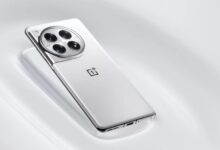Apple could procure camera sensors from Samsung instead of Sony for the first time this year, if the former passes the iPhone maker's quality test.

iPhone 16 Pro models are also speculated to get new 48-megapixel ultra-wide cameras
iPhone 16 is expected to launch within the next few months and details of its various components have recently surfaced online. According to a recent report, the Cupertino technology firm may adopt a new CMOS image sensor made by Samsung for its upcoming smartphone models. This sensor is tipped to have a three-wafer design with advantages over the existing sensor in the iPhone 15 series. If the claims are accurate, Samsung could become Apple's second supplier for camera sensors, alongside Sony.
iPhone 16 could feature Samsung CMOS image sensor
The Elec reports that Apple is conducting final quality assessments of a new image CMOS image sensor (CIS) supplied by Samsung. This potential shift from Sony to Samsung is said to be due to delays faced by the Cupertino-based tech giant in receiving the image sensors last year, which resulted in difficulties in setting the iPhone 15 launch date.
Apple is looking to incorporating new technologies in its camera system, following the advancements made by its competitors, according to the report, which adds that separation of the sensor's internal components may result in higher pixel density, smaller pixel sizes, and reduced noise.
Samsung was reportedly contacted by Apple to develop the CMOS sensor for the iPhone, which is now undergoing quality tests. This sensor is reported to have a three-wafer stack design, each wafer housing distinct elements.
On the other hand, previous iPhone models have featured sensors with a two-wafer stack design, with transistors and photodiodes on the same wafer. Samsung's sensor may feature wafers attached using a process known as wafer-to-wafer hybrid bonding through a copper pad, according to the publication.
iPhone 16 Pro to feature upgraded ultra-wide angle
iPhone 16 Pro models are also reported to feature 48-megapixel ultra-wide cameras, a considerable upgrade over the existing 12-megapixel sensors. Furthermore, the iPhone 16 Pro is tipped to adopt the tetraprism lens which debuted with the iPhone 15 Pro Max, enabling support for 5x optical zoom using the telephoto camera.
Apple is also speculated to introduce a new anti-reflective optical coating technology known as atomic layer deposition (ALD) to its cameras. However, it is unclear if this would come to the iPhone 16 Pro, iPhone 16 Pro Max, or both handsets.







